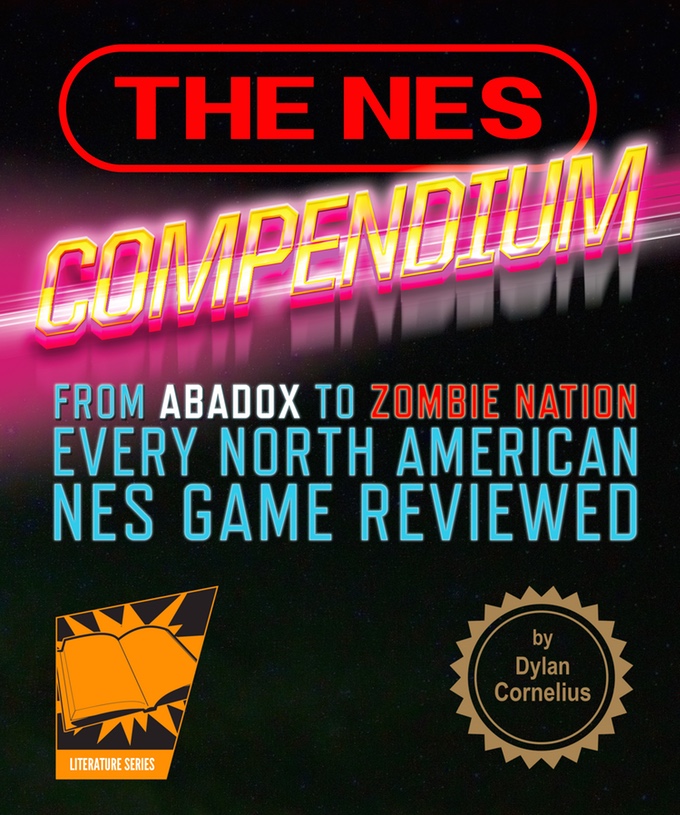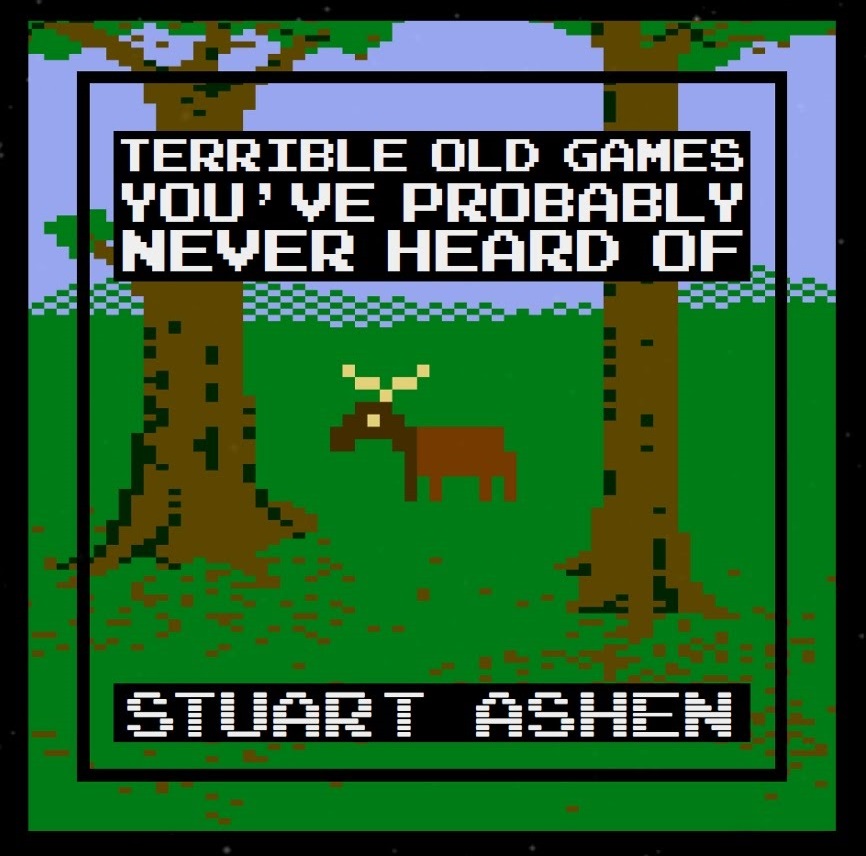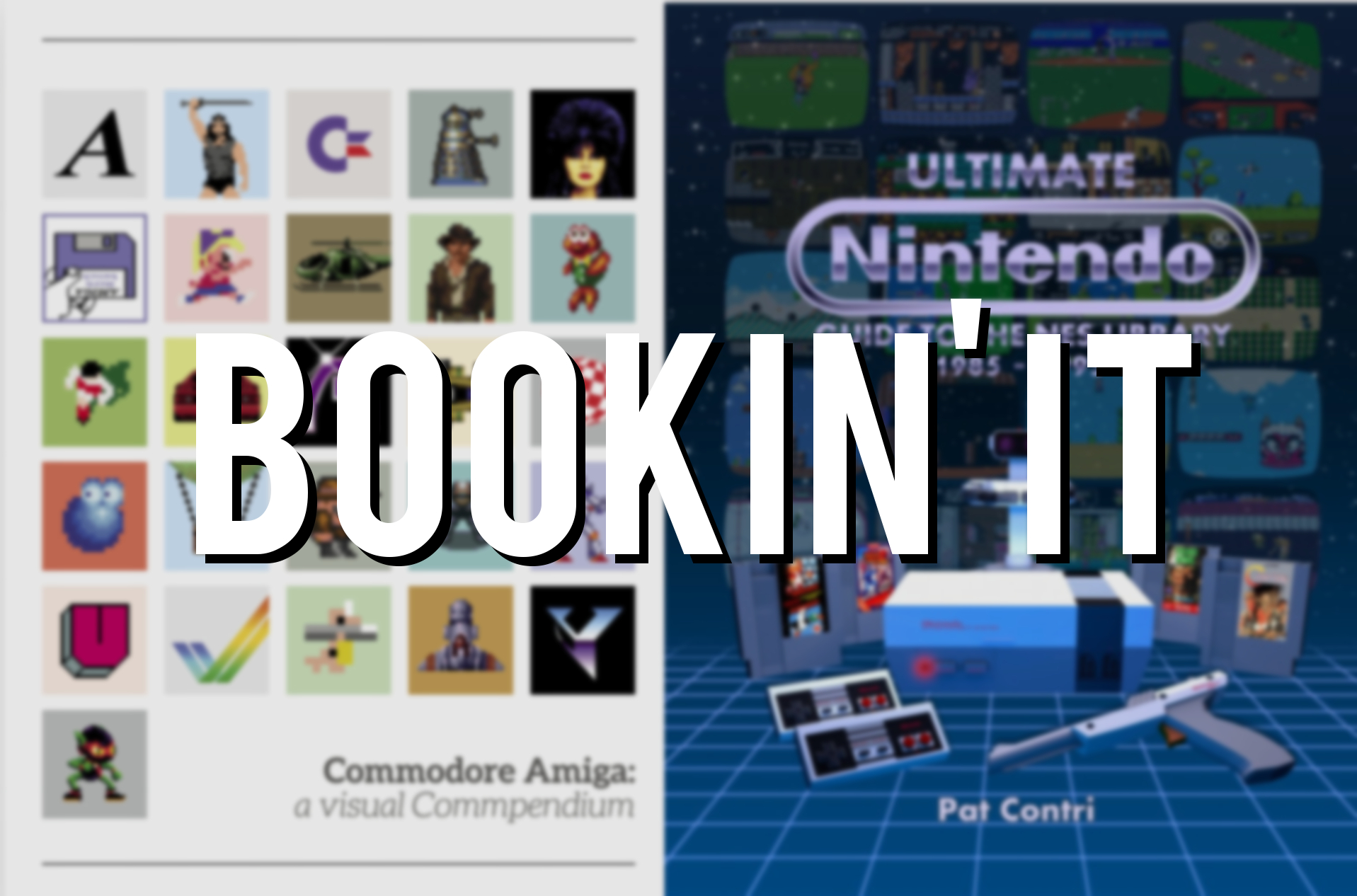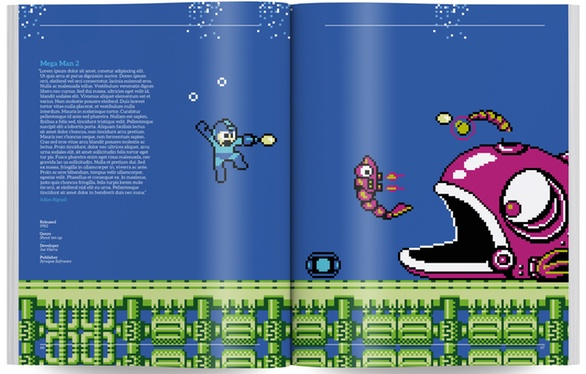There’s nothing like cracking open a new book. You get that fresh smell of paper, the pages rubbing between your fingertips, and a nice memento to put on your shelf that makes you look smart. Plus, books are retro. With the advent of e-books on phones, tablets, and even watches, nobody buys old-fashioned books anymore. That’s why they’re perfect for gamers and Kickstarter backers, who obsess over anything and everything from the before 1990. Case in point: retro video game compendiums.
Video game books, at least the non-fiction variety, have a long history with crowdfunding. Over the next several weeks, we’re going to take a look at some of these books, and why they’re so popular. Today, we’re looking at the abundance of books on Nintendo and old computers like the Commodore 64 and the ZX Spectrum.
 There are at least 27 crowdfunding campaigns across Kickstarter and Unbound for books dedicated to Nintendo and old computers. They can be hard to track down because there’s no consistent organization of these campaigns. Some categorize themselves as “Non-Fiction,” but most are simply “Video Games.” They also encompass a large range of genres. Many of these books are visual compendiums, or they offer a historical study of a company or specific hardware. Others, like Terrible Old Games You Probably Never Heard Of, are a comedic look at games from a variety of platforms. There are also the occasional smatterings of collector’s guides, personal memoirs, and art books.
There are at least 27 crowdfunding campaigns across Kickstarter and Unbound for books dedicated to Nintendo and old computers. They can be hard to track down because there’s no consistent organization of these campaigns. Some categorize themselves as “Non-Fiction,” but most are simply “Video Games.” They also encompass a large range of genres. Many of these books are visual compendiums, or they offer a historical study of a company or specific hardware. Others, like Terrible Old Games You Probably Never Heard Of, are a comedic look at games from a variety of platforms. There are also the occasional smatterings of collector’s guides, personal memoirs, and art books.
Whatever your fetish, chances are there’s something here for you – or maybe not. It may sound like there’s a diverse range of topics, but that isn’t necessarily the case. Most of these books focus on the same thing: telling a complete history of whatever company and console they’re focusing on. Unless these authors have access to any worm holes, there can only be one history for each company. So how is it that The Story of the Commodore 64 in Pixels, Commodore 64: A Visual Compendium, and Commodore: The Inside Story were all funded within a two year period?
History only goes one way – forward. It’s the path that it takes on the way that everyone sees differently. Some may not have all the facts, while others might place more significance on other aspects. It’s up to the individual to interpret the history for themselves. For example, no one can say with certainty why the Roman Empire fell. Some adamantly believe it was because of lead pipes, while others point to Rome’s over-reliance on slave labor. Both of those things happened, but it’s impossible to scientifically state which was more crucial to its fall, if they were even that important at all.
Video games are no different, and neither are their stories. The Complete NES Collector’s Book aimed to be the most comprehensive collector’s guide out there, with tidbits about the history behind some of the games. Nintendo NES Library Guide & Review Book is, as the title states, a guide, but also a review of every game as well. To further illustrate this point, let’s take a look at a handful of books about both computers and the NES and see what differentiates them from one another.
Commodore: The Amiga Years
In July 2015, 1,523 backers funded Commodore: The Amiga Years, by Brian Bagnall. Bagnall previously wrote Commodore: A Company on the Edge and Maximum Lego NXT: Building Robots with Java Brains, and has written numerous books on computers and hacking. This particular book examines the history of Commodore’s Amiga line of computers, from 1982 to their closure in 1994.
“Prior to undertaking this project, Commodore’s trajectory as a company was a huge mystery. Writing this book will allow me to sleuth out what happened, relive those times alongside those who were there, and share the results with fellow travelers like you.”
The Amiga Years will also feature interviews from at least 12 people, including former Commodore General Manager David Pleasance and the man who designed the Amiga’s operating system, Carl Sassenrath. One of the more interesting aspects is that Bagnall will also talk to employees who left Commodore specifically to work on the Atari ST, one of the big competitors of the Amiga line.
Commodore: The Inside Story
Perhaps after getting a taste of excitement after Bagnall’s interview, David Pleasance began work on his own book. Commodore: The Inside Story covers almost the exact same time period as The Amiga Years, 1983 to 1995, but takes a larger view of the overall company. Rather than being written by an outsider conducting interviews, The Inside Story is just that – the story of the fall of Commodore from people within the company, and not just Pleasance himself.
“The book will contain many, many stories (I assure you everything I tell you is true) – in fact I am requesting several other former Commodore employees to write their versions of what happened – so you do not get only my perspective – in this way you can be sure everything in the book is “the real deal”.”
 The fall of Commodore is an interesting. Once one of the top computer companies in the world, Commodore’s decline into bankruptcy and closure was quick. Poor treatment of manufacturers and customers, founder Jack Tramiel leaving to start Atari, and the rise of other companies like IBM and Apple pushed Commodore into a corner they couldn’t fight their way out of. Just like Rome, it’s impossible to point to any one thing as the final nail in Commodore’s coffin. This book’s aim is to provide the accounts of lead pipes and barbarian invasions from within the Roman Empire itself.
The fall of Commodore is an interesting. Once one of the top computer companies in the world, Commodore’s decline into bankruptcy and closure was quick. Poor treatment of manufacturers and customers, founder Jack Tramiel leaving to start Atari, and the rise of other companies like IBM and Apple pushed Commodore into a corner they couldn’t fight their way out of. Just like Rome, it’s impossible to point to any one thing as the final nail in Commodore’s coffin. This book’s aim is to provide the accounts of lead pipes and barbarian invasions from within the Roman Empire itself.
Terrible Old Games You Probably Never Heard Of
We’ve covered popular YouTuber Stuart Ashen’s book before. It’s another great example of an author doing something unique with the same general premise. Rather than looking at Commodore itself, Terrible Old Games You Probably Never Heard Of covers a wide range of video games for various computers of the 1980’s. Everything from the Commodore 64, the Atari ST, and even the VIC-20 and MSX are represented. The hook is that every game featured is terrible. While they all qualify as some of the worst games of all-time, nobody remembers or even knows about them. There are also a few interviews with other retro game pundits, and review scores for each game from magazines of the time.
“Surprise Surprise is a rare thing – a game that seems to have been actively designed to frustrate and annoy the player to the point of illness,” the description reads. “On loading you’re presented with a headache-inducing mess of flashing colors, random beeps and randomly generated lines. The result is that your screen looks like it has been smashed, something you’ll have the urge to do in real life if you continue and actually play the game.”
Terrible Old Games was also funded through a different medium than the rest. Rather than going through Kickstarter or Indiegogo, Ashen chose Unbound. Unbound, much like Fig, is dedicated to one medium – books. The general idea is the same as Kickstarter, though with significant differences. Backers cannot see the funding goal for any campaign, instead how much money raised per project is shown only as a percentage. Campaigns also don’t have a fixed time period like they would on anywhere else, they keep going until the book is complete, at which point you can simply buy the book as you would from an online retailer.
Ashen is currently funding a sequel on the site as well, Attack of the Flickering Skeletons, which will he admits will be more of the same, because “what the world needs right now is to know exactly how bad Domain of the Undead for the Atari 8-bit computers was.”
NES/Famicom: A Visual Compendium
Sam Dyer has made a name for himself by crowdfunding several visual compendiums on Kickstarter. NES/Famicom: A Visual Compendium is the first to steer away from all those old computers we talked about and land in the world of consoles, with a campaign for one on the SNES and Super Famicom ongoing.
Unlike the other books featured on this list so far, Dyer’s work tells its stories mostly through pictures and game screenshots.
“The visual compendium books aim to showcase the very best pixel art, box art and product design around each system. Typically, the visuals are the hero with small soundbites of text accompanying each game. This may be a quote from the games original developer/artist, a review from a well know journalist or even a fan taking about his/her memories. Within each book is also a series of larger text heavy features on subjects such a key software house or developer/artist interviews.”
It makes sense, considering Dyer is a graphic artist. His books have been praised for their lurid use of color and engaging selection of stills. Each page is a full-color print from some of the most beloved games on whatever system the book is about, and this one’s no different.
NES Oddities & the Homebrew Revolution: Games You Haven’t Played
As with Sam Dyer’s work, Jeffrey Wittenhagen 2017 Kickstarter project is itself a compendium. But where that book focused on the art of classic games, NES Oddities & the Homebrew Revolution: Games You Haven’t Played is all about the weird, obscure, and unlicensed games of the NES library. While it’s referred to as a compendium, it’s laid out more like a collector’s guide, featuring the covers of each game and giving a brief description and release information for all of them.
“The book is going to be close to 500 pages and covers all of the games that weren’t normally licensed and released for the original 8-Bit NES. That means Unlicensed Games, that weren’t officially released by Nintendo will be included, as well as unique unlicensed games released in other regions. Unique PAL Exclusive titles that were released over in Europe, along with major label/box Variants and Holy Grails for the system will be covered.”
Nintendo is famous for its strict seal of quality, one that it introduced when it first entered the home console market with the Famicom in Japan, and the NES in the US and Europe. If a game didn’t have Nintendo’s authorization, then it was going to be sold in an official capacity. However, that didn’t stop many from companies from trying to skirt the rules. The most notable example is Tengen, who went so far as to copy Nintendo’s 10-pin chip that enabled cartridges to operate on the NES, and use them in their unlicensed games. Nintendo took them (and their parent company Atari) to court over it, and won.
The NES has also enjoyed a burgeoning homebrew scene, with bedroom developers creating their own games either for themselves, their friends, or to sell on their own. The homebrew community has continued on long past the NES’s life-cycle, and it’s still going strong today. In fact, there are even some Kickstarted NES games, like Super Russian Roulette and Haunted Halloween ’86.
Love Never Dies
As you can see, all of these authors are finding new and interesting ways to cover the history of these two consoles. There’s a lot of history to go around, and plenty of different aspects of both the Nintendo Entertainment System and old computers that many haven’t touched upon yet.
But why are these this specific period of gaming so popular? There are only a handful of these gaming books about another topic, and fewer still that focus on one particular console. There’s Nintendo 64 Anthology by Geeks-Line, SEGA Mega Drive/Genesis: Collected Works by Darren Wall, and the ongoing PlayStation Anthology also by Geeks-Line, which is to date the most modern system covered. Is this another case of nostalgia sinking its claws into Kickstarter?
For once, I don’t think nostalgia is to blame, not entirely. At the risk of sounding like a broken record, there isn’t any one factor. Video game companies have always had the secrecy of a government agency. You’d think EA were developing nuclear weapons or that Sony was trying to take away people’s healthcare in the dead of night with how quiet they are about everything. Nintendo, Commodore, and the other computer companies from the 1980’s were no exception. Without the internet, these companies enjoyed a higher level of secrecy than they do even now.
When you think about it that way, it’s not surprising that kids of the 80’s want to learn about what was going on behind the closed doors of their favorite game makers. Gamers of today’s age want to learn more about that period of history too. Inside accounts like the one David Pleasance are providing, books about terrible games from the time or unlicensed and homebrew games actually provide us with more information now than we’ve ever had before.

There’s also the popularity aspect. The era of the NES and the Commodore 64 marked the first time gaming became a global phenomenon. The NES was Japanese, obviously, but all of these computers were popular as gaming machines mostly in Europe. The same way many Japanese and Americans have no frame of reference for the Commodore Amiga, most Europeans have no reference for the NES.
Nintendo didn’t consider Europe or the UK to be a major market, so they didn’t really bother marketing it there very much. Many across the pond chose computers, which were cheaper and could be used as more than just gaming devices. Meanwhile Americans and Japanese kids were taken in by the powerful Nintendo, and eventually Sega, marketing.
These books represent a bridge between the two, a way to fill in the gap of knowledge between these three groups of gamers, at least in the US and English speaking parts of Europe anyway. If any of them ever get a translation, it’ll be interesting to see how books on the Commodore or Amiga sell in Japan. If these authors really want to go crazy (and can afford it) it could be worth seeing how any of them sell in places with a fast growing gaming community that doesn’t have much of a past at all to go on, like South America or China.
 These are just a few examples of gaming books in the crowdfunding scene. We’ll be covering them more throughout this series. Books represent an under-reported niche in the gaming community, which is a shame. Many of these are of the highest quality, and their success rate far exceed that of many game campaigns. It’s not true that people don’t read books anymore, crowdfunding and all of these gaming books have already proven that slight dead wrong.
These are just a few examples of gaming books in the crowdfunding scene. We’ll be covering them more throughout this series. Books represent an under-reported niche in the gaming community, which is a shame. Many of these are of the highest quality, and their success rate far exceed that of many game campaigns. It’s not true that people don’t read books anymore, crowdfunding and all of these gaming books have already proven that slight dead wrong.







This https://www.kickstarter.com/projects/1748556728/the-untold-history-of-japanese-game-developers/
was one of my favs, I like the Visual compendiums but i prefer a lot more text and information (that Neo geo history book looked promising but shame it got took down by a copyright claim. I am really hoping someone makes a complete history to every console and computer system.
[…] It articles detailing the crowdfunded books of video games, we explored the popularity of Nintendo and old gaming computers. After that, we examined the other console related books, or lack thereof. These books have a high […]